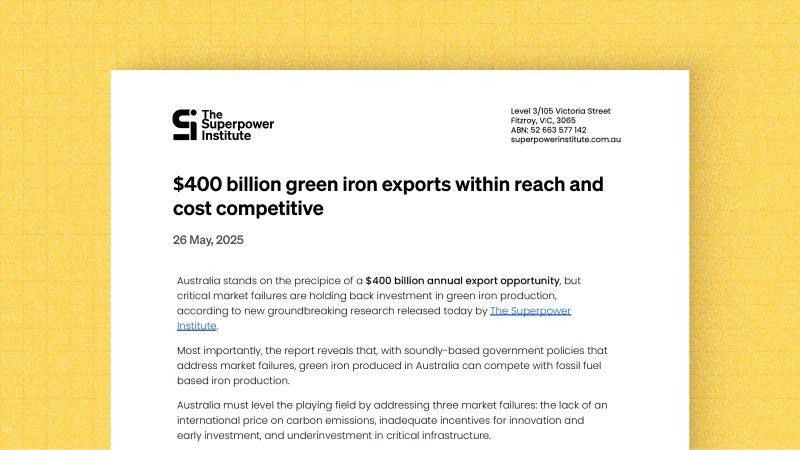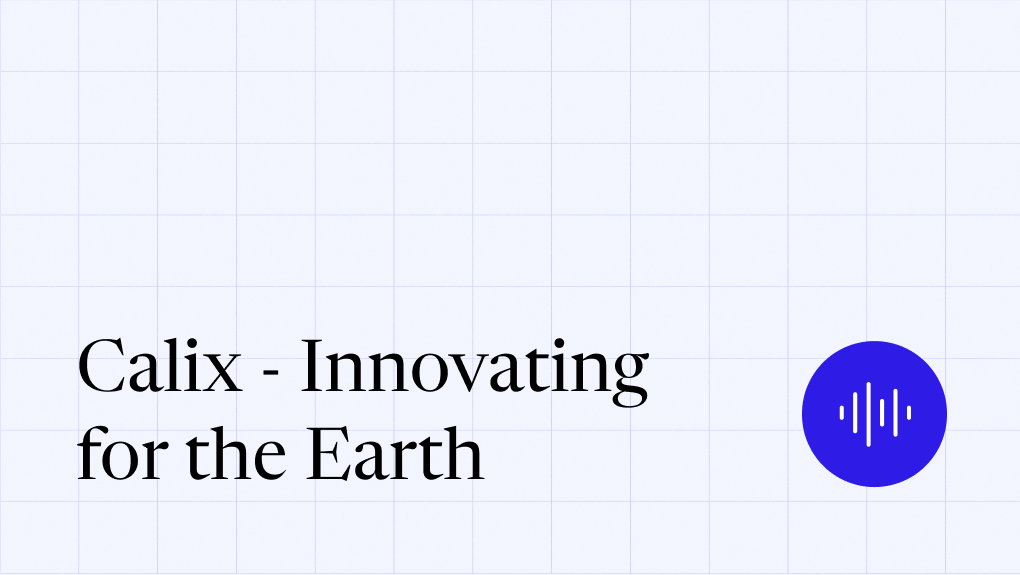Australia stands on the precipice of a $400 billion annual export opportunity, but critical market failures are holding back investment in green iron production, according to new groundbreaking research released today by The Superpower Institute.
Most importantly, the report reveals that, with soundly-based government policies that address market failures, green iron produced in Australia can compete with fossil fuel based iron production.
Australia must level the playing field by addressing three market failures: the lack of an international price on carbon emissions, inadequate incentives for innovation and early investment, and underinvestment in critical infrastructure.
Without targeted policy support, this $400 billion economic prize is at risk.
This report builds on research in The New Energy Trade, which demonstrates Australia’s comparative advantage in green exports, including green iron. At full scale, green iron exports could exceed the current value of iron ore exports by a factor of four, delivering long term economic prosperity.
TSI’s Green Iron Plan presents detailed economic modelling of green iron production across key Australian regions: the Pilbara, Geraldton, Kwinana, Eyre Peninsula and Gladstone. With soundly-based policies, green iron producers in a number of Australian locations would be able to compete with carbon-intensive iron in the international market.
The Superpower Institute’s recommended policies include:
- A green iron production tax credit to simulate the effects of a carbon price, with a proposed value of at least $170 per tonne of green iron.
- Capital grants covering up to 30% of investment costs for early green iron projects.
- Public investment in essential shared infrastructure, including electricity transmission, hydrogen pipelines, ports and water supplies.
- Diplomatic engagement to establish international demand for green iron in Japan, South Korea, Europe, China and Southeast Asia.
Rod Sims, Chair of The Superpower Institute said:
“This is the most detailed report ever done on the green iron opportunity in Australia. It is about correcting specific market failures to unlock a genuinely competitive Australian advantage.
“The failures we outline aren’t simply theoretical - they are actively preventing investment decisions right now. Projects worth billions of dollars and thousands of jobs are stalled because these market failures make the economics unworkable without policy intervention.
“The onus is now on the government: there is a substantial prize in play if the right policies, grounded in the National Interest Framework, are adopted.
“Green iron is the next great chapter in Australia’s export story. As the world decarbonises, our fossil fuel exports will inevitably decline. But by using our unparalleled renewable energy resources to make green iron, we can replace those exports with high value, zero carbon products that the world will need.”
Baethan Mullen, CEO of The Superpower Institute said:
“Australia has long played a pivotal role in global energy trade. With the right policies, we can continue that role in the zero-carbon era - starting with exporting energy embedded in green iron. This is a nation building opportunity on the scale of post war reconstruction. We can lay the foundations now for full employment, rising incomes and a stronger, more resilient economy for decades to come.
"The global race to secure green iron production is already underway. Countries that move first to address these market failures will capture market share, technology leadership, and decades of economic benefits. We have a once-in-a-generation opportunity, but the window for action is closing."
Ingrid Burfurd, Lead of Carbon Pricing and Policy at The Superpower Institute, said:
“This report shows what’s needed to turn Australia’s green iron potential into reality. We can’t expect markets to fix themselves. We need policy leadership to back early projects, close the cost gap created by the lack of an international carbon price, and to help lay the foundations for a globally competitive industry. This plan shows the way."
For more information and to access the full report, visit:http://www.superpowerinstitute.com.au/work/green-iron-plan



